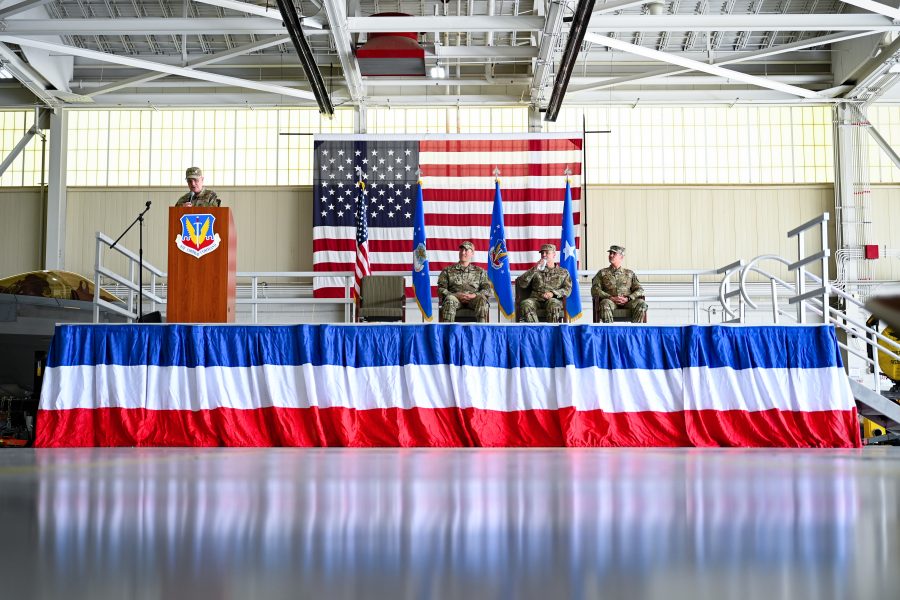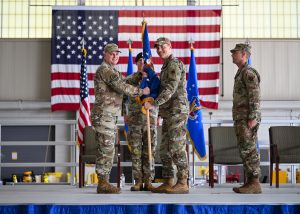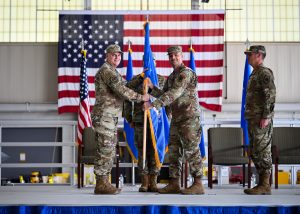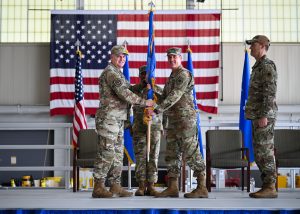Air Combat Command activated three new air task forces this week, bringing the Air Force closer to starting all six of the units that will form the next stage of its deployment model.
ACC Deputy Commander Lt. Gen. Michael Koscheski on Sept. 23 presided over a ceremony at Joint Base Langley-Eustis, Va., during which three commanders accepted the guidon for their new units:
- Col. Benjamin Donberg will command the 13th Air Task Force at Joint Base San Antonio, Texas
- Col. William Watkins will command the 22nd Air Task Force at Fairchild Air Force Base, Wash.
- Col. Bradley Baker will command the 23rd Air Task Force at Seymour Johnson Air Force Base, N.C.
ACC’s stand-up of three task forces follows Air Mobility Command’s activation of 12th Air Task Force at Scott Air Force Base, Ill., earlier this month. Air Force Special Operations Command started 11th Air Task Force at Davis-Monthan Air Force Base, Ariz., in July.
One final air task force, the 21st Air Task Force, will be activated Oct. 8 at Dyess Air Force Base, Texas, and fall under Air Force Global Strike Command.
Each air task force will consist of:
- A command element with expeditionary air staff and special staff that work directly for the commander
- A combat air base squadron that handles base support.
- One or more mission generation force elements to generate combat power, such as a fighter squadron, a bomber squadron, or a special warfare squadron.
- Mission sustainment teams attached to the mission generation force elements that provide sustainment and protection for those force elements when they deploy to a more forward or austere location.
The task forces are meant to craft more cohesive teams of Airmen that train and work together prior to deploying, instead of relying on the current system that pulls Airmen into piecemeal units as needed to support military operations overseas.
In the long run, the Air Force wants to create two dozen deployable combat wings. Each would centralize their resources and personnel at a single base so they can live and train together, then pick up and go when called upon.
Air task forces are an intermediate step toward that vision, bringing Airmen from across the same region together for training. The previous system could pull Airmen from around 60 units at more than a dozen different Air Force bases, forcing troops to form bespoke teams with people they didn’t know on the fly. ATFs will limit that sourcing to as many as four bases, making it more likely that Airmen have developed relationships and trust ahead of time.
“This will start us on a journey creating a definable and sustainable force presentation model for the United States Air Force,” Koscheski said during the ceremony.
Central to the concept is the Air Force’s new “AFFORGEN” deployment model that cycles units through six-month phases of increasingly complex training before a combat deployment and a reset phase. Of the six air task forces, three will deploy in October 2025 while others prepare to replace them; the other three will take over for the first batch of forces in April 2026.
Air Force Chief of Staff Gen. David W. Allvin has said he hopes to have the first deployable combat wings resourced and ready by the fall of 2026, when the second air task forces would be wrapping up their deployment.





